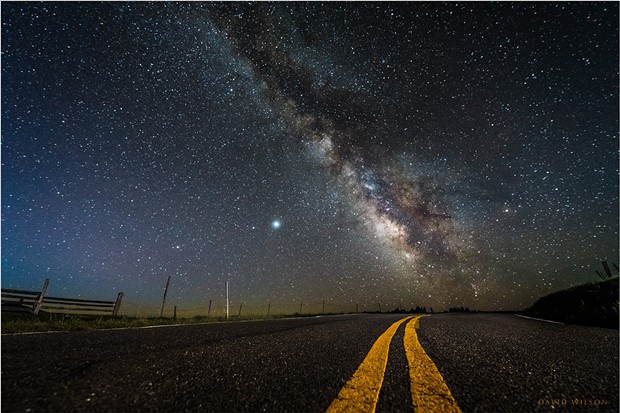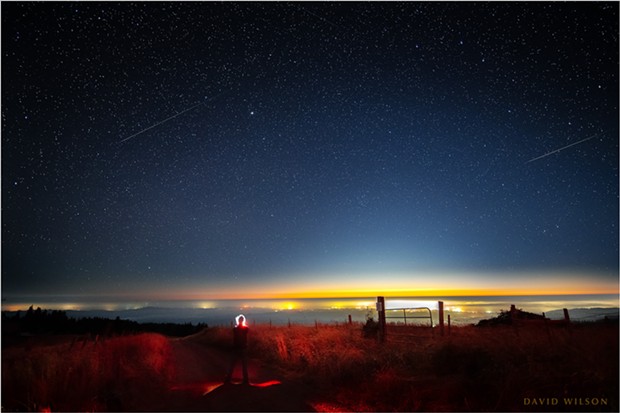Science
Monday, September 21, 2020
North Coast Night Lights: Visualize the Stars
Posted By David Wilson on Mon, Sep 21, 2020 at 4:28 PM
“Roads? Where we’re going, we don’t need — roads.” - Doc, Back to the Future II.
One of the more challenging visualizations for me is to imagine looking at the Solar System from a point above it in outer space, far enough out that the Sun is but a bright point of light below. With no inhibiting sunlight, the stars are bright all around us; we see deep into the Cosmos wherever we turn. The Milky Way’s misty path forms an incredible ring encircling us completely, from its thick, dense core region in one direction to the thinnest stretches on our opposite side.
Suspended above the Solar System, there is no day or night for us, and time can almost stand still as we hang here in space. But there is movement around the little Sun below us, and where there is movement, there must be time.
Tuesday, August 18, 2020
Perseid Meteors 2020: A comet’s tale
Posted By David Wilson on Tue, Aug 18, 2020 at 11:02 AM
Currently speeding out from the sun after its last visit to the solar system’s inner reaches in 1992, Comet Swift-Tuttle leaves a trail of debris in its path. Comets are made of frozen gasses, dust and rock; as the sun’s energy warms and sublimates the frozen gasses, some of its solids are blown off into space, leaving the trail of particles. (See the time-lapse video below.)
Every 133 years, Swift-Tuttle comes in from out beyond Pluto to swing by Earth’s neighborhood on its path around the sun, laying down another swath of dust and small particles before heading back out again. Earth passes through its stream of cometary dust every year in early to mid August. As we pass through the trail of dust and small chunks, we collect them in our atmosphere like bugs on a windshield. The particles, or meteoroids, enter the atmosphere at incredibly high speeds (over 100,000 miles per hour) and burn up quickly due to friction with the air. The meteors we see in the sky are their paths burning through the sky.


































